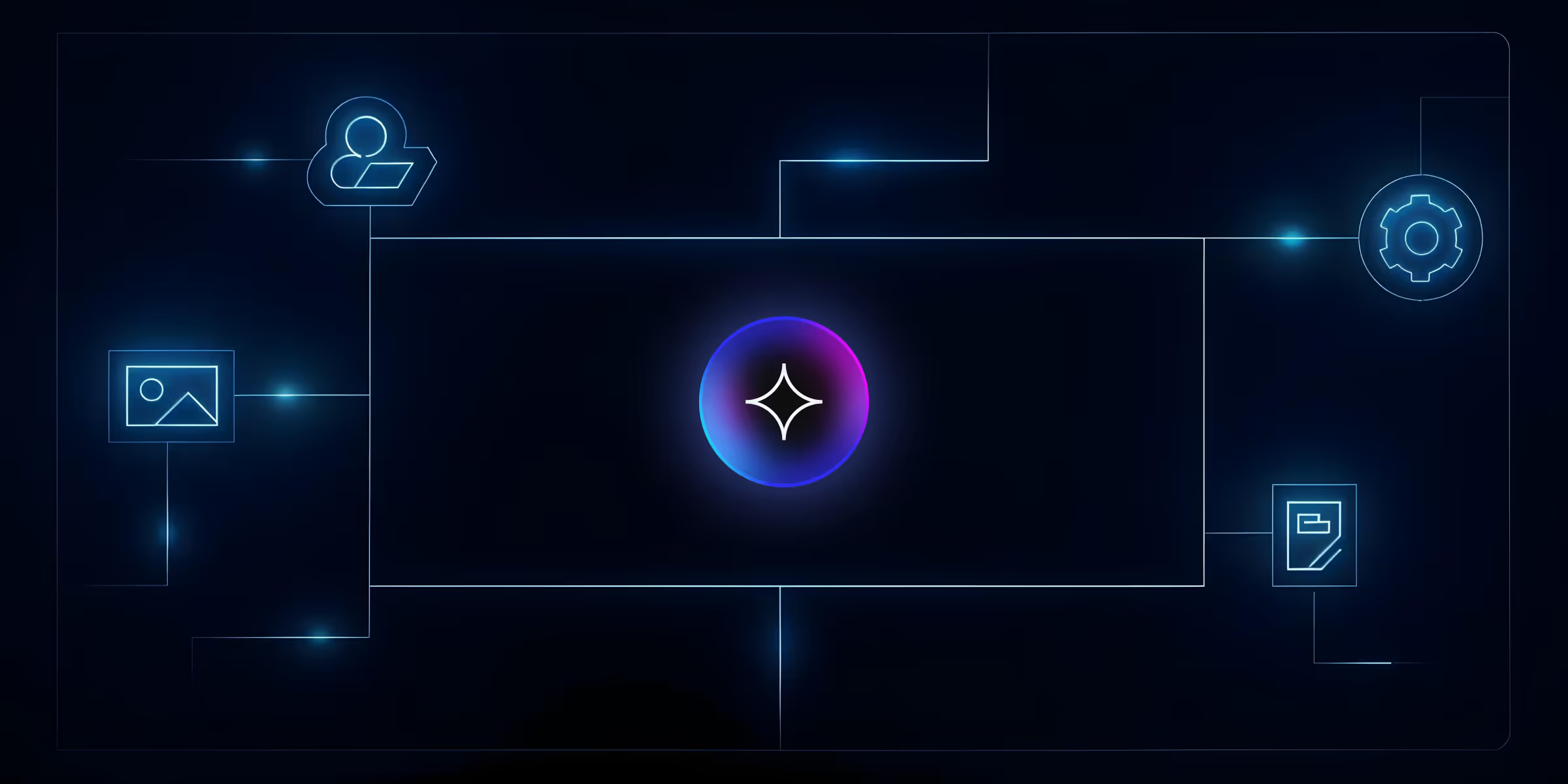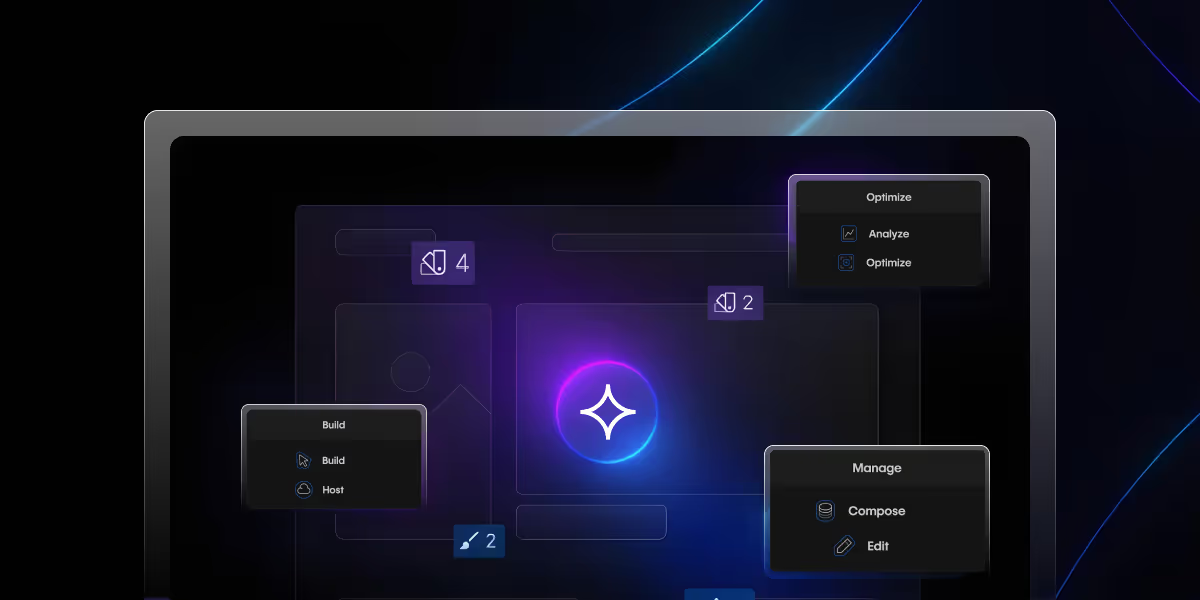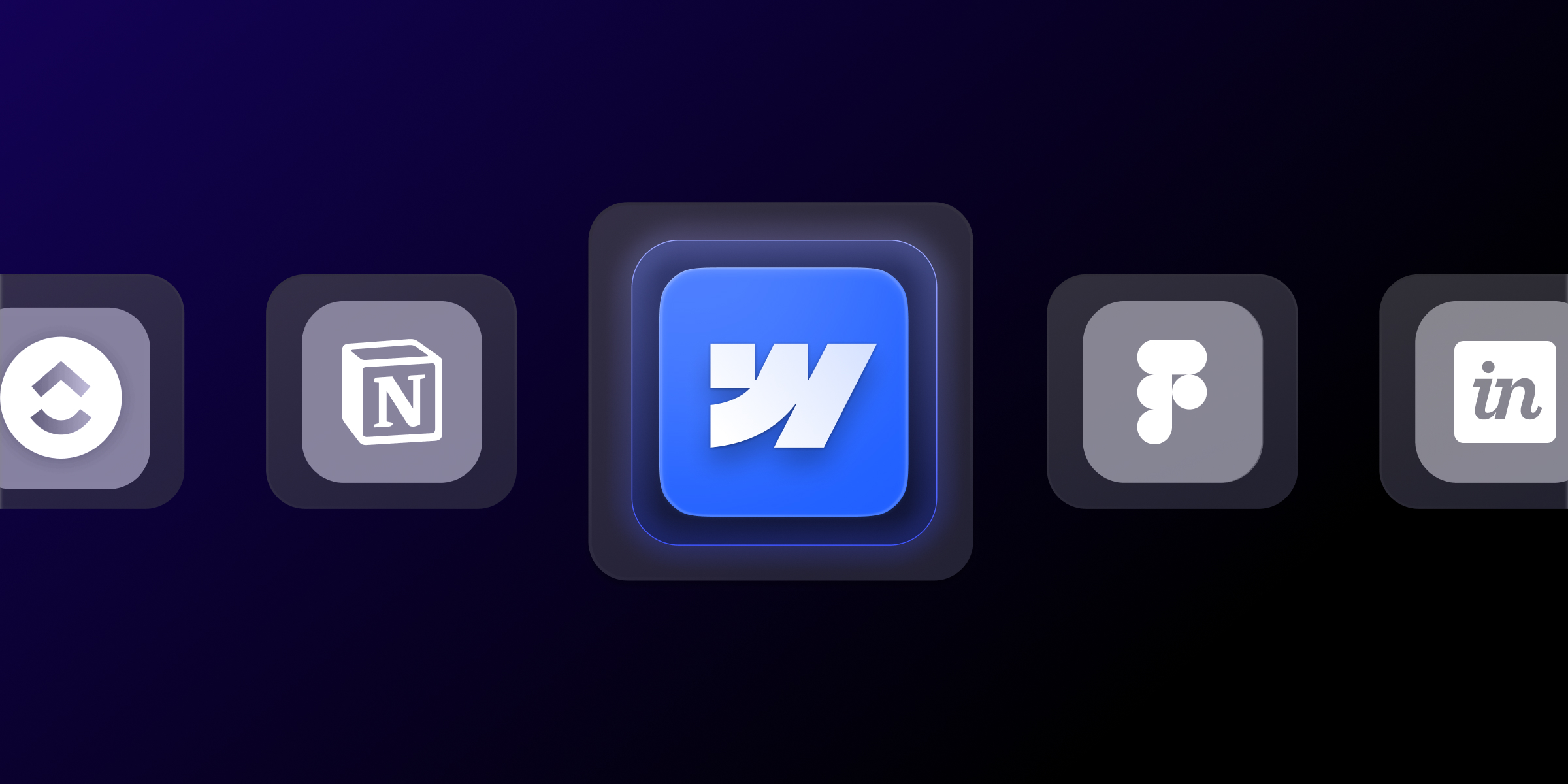Custom Webflow Design Templates: Complete Customization Guide
Master custom Webflow designs with our complete template customization guide. Expert tips for transforming any template into a unique, brand-aligned website.

The web design & development industry is undergoing a massive transformation because of the rise of artificial intelligence. No longer is website creation limited to seasoned developers or professional web designers. AI tools now empower businesses, entrepreneurs, and marketers to create visually stunning and highly functional websites in record time, all without writing a single line of code.
One of the most important innovations in this industry is the Webflow AI Site Builder, launched by Webflow in 2024 and refined further in 2025. This powerful tool merges the creative freedom of Webflow with the intelligence of machine learning, enabling users to build full websites using natural language prompts.
Whether you're a designer looking to speed up prototyping, a business owner aiming to launch quickly, or a marketer testing landing pages or blog pages, Webflow AI is engineered to meet your needs. In this blog, we’ll dive deep into what makes Webflow’s AI site builder so revolutionary, how it works, and whether it’s the right fit for your next project.
Webflow AI is a next-generation site-building tool that uses artificial intelligence to help users design, build, and customize websites faster and more efficiently. At its core, the AI site builder allows users to type simple commands such as “Create a modern SaaS homepage with a hero, features section, and testimonials,” and Webflow generates the layout and content in seconds.
Webflow AI, introduced in late 2024 and rolled out broadly in 2025, represents a major leap from traditional no-code tools. While Webflow has always offered visual web design capabilities, this AI-driven upgrade streamlines the process even further by replacing manual configuration with intelligent automation.
Traditional Webflow requires users to drag and drop elements manually, configure styles, and manage responsive behavior. The AI builder simplifies this with:
Let’s explore the standout features that make Webflow AI a powerful asset for modern web creators:
With just a few lines of input, Webflow AI can generate:
Based on your prompt and website goal (e.g., eCommerce, SaaS, or portfolio), the AI recommends optimal layout structures, such as
Need a pricing table, a newsletter sign-up form, or a contact section? The AI can instantly generate reusable components that align with your design system and brand identity.
You can interact with Webflow’s AI in plain English. For example:
“Create a landing page for a mobile app with dark mode and animations.”
This bridges the gap between your vision and implementation; no technical know-how is required.
Webflow AI offers real-time recommendations to improve accessibility, readability, and user experience, such as increasing contrast, resizing text, or optimizing layout spacing.
Although not native yet, Webflow allows integration with AI image tools like DALL·E and Unsplash API to auto-fill your site with high-quality visuals based on content themes.
At the heart of Webflow AI is a seamless integration with large language models (LLMs), such as OpenAI’s GPT models. Here’s how the process flows:
This tight feedback loop between human input and machine intelligence makes Webflow AI a collaborative design partner rather than just a tool.
Gone are the days of spending weeks wireframing and coding. AI delivers production-ready prototypes and final pages in minutes, massively accelerating development timelines.
Whether you're a non-technical founder or a first-time user, Webflow AI makes web design approachable and frictionless.
While AI gets you 80% there, Webflow’s visual editor allows pixel-perfect adjustments, combining speed with flexibility.
AI can follow design tokens and style guides, ensuring that every component aligns with your visual brand identity.
Webflow AI suits all tiers, from one-person startups to agencies managing dozens of client sites.
Despite its advantages, Webflow AI isn’t without limitations:
Webflow has ambitious plans to evolve AI integration beyond basic page creation. According to their roadmap, here’s what to expect in the near future:
AI will assist with:
AI will help bridge the gap between designers and developers, generating custom code snippets and suggesting responsive design fixes.
Expect AI to analyze your brand guidelines and auto-generate content, color schemes, and layout styles that match your identity.
Webflow AI is an exciting leap forward in no-code web design. It offers the speed of AI with the customization of Webflow’s robust Designer.
Use AI for speed, prototyping, and scalability. And use custom design for highly bespoke, high-touch projects where human creativity is irreplaceable.
Webflow AI is absolutely worth exploring, especially if you value agility, efficiency, and ease of use.
AI is not just the future of web design; it's the present. With Webflow AI Site Builder, anyone can build a beautiful, responsive, and functional website without writing a line of code or hiring a full team.
Whether you’re launching your first product or managing dozens of client sites, Webflow AI brings the power of intelligent design to your fingertips.
Ready to see it in action? Head over to Webflow and try the AI site builder today, or get expert help from a Webflow agency that can turn your ideas into reality.
Webflow AI Site Builder is a powerful no-code tool that uses artificial intelligence to generate fully functional, responsive websites based on your input prompts. It helps users create websites faster by automating layout, content, and design decisions.
No. Webflow AI is designed for both beginners and professionals. You don’t need any coding knowledge—just describe what you need, and the AI builds it for you. You can still add custom code later if needed.
Yes. Once the AI generates the site, you can fully customize everything in the Webflow Designer—layouts, styles, content, interactions, and more. The AI gives you a strong starting point, but you're always in control.
Absolutely. Webflow AI can generate SEO-friendly page structures and metadata. After generation, you can further refine headings, meta titles, alt texts, and URLs to improve search visibility.
Yes. After the AI generates your site, you can switch to manual mode and use Webflow Designer to customize every detail—just like with any Webflow project.

Master custom Webflow designs with our complete template customization guide. Expert tips for transforming any template into a unique, brand-aligned website.

Learn how the Webflow AI Assistant transforms web design and content creation. Boost your efficiency and creativity with this innovative tool!

Find the 15 essential Webflow development tools that top agencies use in 2025. Boost productivity, streamline workflows, and deliver better client results.
Quick Turnaround. No Contracts. Cancel Anytime. Book a 30 minutes consulting call with our expert.